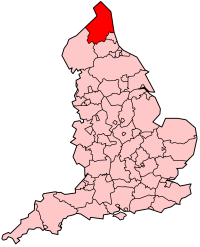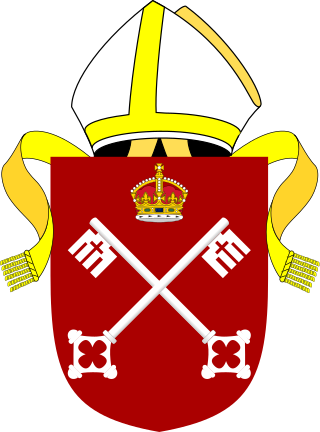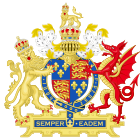
Lindisfarne, also known as Holy Island, is a tidal island off the northeast coast of England, which constitutes the civil parish of Holy Island in Northumberland. Holy Island has a recorded history from the 6th century AD; it was an important centre of Celtic Christianity under Saints Aidan, Cuthbert, Eadfrith, and Eadberht of Lindisfarne. The island was originally home to a monastery, which was destroyed during the Viking invasions but re-established as a priory following the Norman Conquest of England. Other notable sites built on the island are St Mary the Virgin parish church, Lindisfarne Castle, several lighthouses and other navigational markers, and a complex network of lime kilns. In the present day, the island is an Area of Outstanding Natural Beauty and a hotspot for historical tourism and bird watching. As of February 2020, the island had three pubs, a hotel and a post office as well as a museum with vast historical importance.

Cuthbert of Lindisfarne was a saint of the early Northumbrian church in the Celtic tradition. He was a monk, bishop and hermit, associated with the monasteries of Melrose and Lindisfarne in the Kingdom of Northumbria, today in northern England and southern Scotland. Both during his life and after his death, he became a popular medieval saint of Northern England, with a cult centred on his tomb at Durham Cathedral. Cuthbert is regarded as the patron saint of Northumbria. His feast days are 20 March and 4 September.

Northumberland is a ceremonial county in North East England, bordering Scotland. It is bordered by the Scottish Borders to the north, the North Sea to the east, Tyne and Wear and County Durham to the south, and Cumbria to the west. The town of Blyth is the largest settlement. Northumberland is the northernmost county in England.

County Durham, officially simply Durham (/ˈdʌrəm/), is a ceremonial county in North East England. The county borders Northumberland and Tyne and Wear to the north, the North Sea to the east, North Yorkshire to the south, and Cumbria to the west. The largest settlement is Darlington.

Tynedale was a local government district in Northumberland, England. The district had a resident population of 58,808 according to the 2001 census. The main towns were Hexham, Haltwhistle and Prudhoe. The district contained part of Hadrian's Wall and the southern part of Northumberland National Park.

Hexham Abbey is a Grade I listed church dedicated to St Andrew, in the town of Hexham, Northumberland, in the North East of England. Originally built in AD 674, the Abbey was built up during the 12th century into its current form, with additions around the turn of the 20th century. Since the dissolution of the monasteries in 1537, the Abbey has been the parish church of Hexham. In 2014 the Abbey regained ownership of its former monastic buildings, which had been used as Hexham magistrates' court, and subsequently developed them into a permanent exhibition and visitor centre, telling the story of the Abbey's history.

In England, Wales and Ireland a county palatine or palatinate was an area ruled by a hereditary nobleman enjoying special authority and autonomy from the rest of a kingdom. The name derives from the Latin adjective palātīnus, "relating to the palace", from the noun palātium, "palace". It thus implies the exercise of a quasi-royal prerogative within a county, that is to say, a jurisdiction ruled by an earl, the English equivalent of a count. A duchy palatine is similar but is ruled over by a duke, a nobleman of higher precedence than an earl or count.

Northumberland, England's northernmost county, is a land where Roman occupiers once guarded a walled frontier, Anglian invaders fought with Celtic natives, and Norman lords built castles to suppress rebellion and defend a contested border with Scotland. The present-day county is a vestige of an independent kingdom that once stretched from Edinburgh to the Humber, hence its name, meaning literally 'north of the Humber'. Reflecting its tumultuous past, Northumberland has more castles than any other county in England, and the greatest number of recognised battle sites. Once an economically important region that supplied much of the coal that powered the industrial revolution, Northumberland is now a primarily rural county with a small and gradually shrinking population.

The Diocese of York is an administrative division of the Church of England, part of the Province of York. It covers the city of York, the eastern part of North Yorkshire, and most of the East Riding of Yorkshire.

The Bishop of Hexham was an episcopal title which took its name after the market town of Hexham in Northumberland, England. The title was first used by the Anglo-Saxons in the 7th and 9th centuries, and then by the Roman Catholic Church since the 19th century.
This timeline summarises significant events in the history of Northumbria and Northumberland.

The diocese of Durham is a diocese of the Church of England in North East England. The boundaries of the diocese are the historic boundaries of County Durham, meaning it includes the part of Tyne and Wear south of the River Tyne and contemporary County Durham north of the River Tees. It contains 249 parishes and 292 churches. Durham Cathedral is the seat of the bishop of Durham, and the diocesan offices are located just outside the city at Stonebridge. The bishop lives in Bishop Auckland and has offices in Auckland Castle.

The County Palatine of Durham was a jurisdiction in the North of England, within which the bishop of Durham had rights usually exclusive to the monarch. It developed from the Liberty of Durham, which emerged in the Anglo-Saxon period. The gradual acquisition of powers by the bishops led to Durham being recognised as a palatinate by the late thirteenth century, one of several such counties in England during the Middle Ages. The county palatine had its own government and institutions, which broadly mirrored those of the monarch and included several judicial courts. From the sixteenth century the palatine rights of the bishops were gradually reduced, and were finally abolished in 1836. The last palatine institution to survive was the court of chancery, which was abolished in 1972.

The bishop of Durham is responsible for the diocese of Durham in the province of York. The diocese is one of the oldest in England and its bishop is a member of the House of Lords. Paul Butler was the most recent bishop of Durham until his retirement in February 2024.
Beadwulf was the last Bishop of Candida Casa to be consecrated by the Northumbrian Archbishop of York. He appears in four years of the chronicles and nowhere else. Nothing else is known of him, and his sole historical significance is that he was a bishop of the short-lived Northumbrian See of Candida Casa at Whithorn.

The Diocese of Hexham and Newcastle is a Latin Church diocese of the Catholic Church, centred on St Mary's Cathedral in the city of Newcastle upon Tyne in England. The diocese is one of the six suffragan sees in the ecclesiastical Province of Liverpool and covers the historic boundaries of County Durham and Northumberland.

Whitley Chapel is a village in Northumberland, England about 4 miles (6 km) south of Hexham, and in the parish of Hexhamshire.

Tidfrith or Tidferth was an early 9th-century Northumbrian prelate. Said to have died on his way to Rome, he is the last known Anglo-Saxon bishop of Hexham. This bishopric, like the bishopric of Whithorn, probably ceased to exist, and was probably taken over by the authority of the bishopric of Lindisfarne. A runic inscription on a standing cross found in the cemetery of the church of Monkwearmouth is thought to bear his name.

Northumbria, in modern contexts, usually refers to the region of England between the Tees and Tweed, including the historic counties of Northumberland and Durham, but it may also be taken to be synonymous with North East England. The area corresponds to the rump lands of the historical Kingdom of Northumbria, which later developed into the late medieval county of Northumberland or Comitatus Northumbriae, whose original southern boundary was the River Tees. A provincial flag of Northumbria has been registered.

The Moot Hall is a former judicial structure in The Market Place, Hexham, Northumberland, England. The structure, which currently accommodates an art gallery on the ground floor and the museums department of Northumberland County Council on the upper floors, is a Grade I listed building.



















